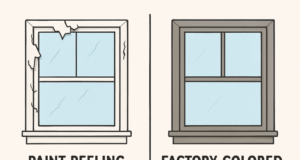Ensuring Oversight, Accountability in HUD’s Approach to Lead-Based Paint and Mold Remediation
WASHINGTON, June 28 – (RealEstateRama) — The Housing and Insurance Subcommittee met today to examine how the U.S. Department of Housing and Urban Development’s (HUD) programs manage and remedy unsafe living conditions caused by lead-based paint and mold for many individuals and families living in public and subsidized housing.
“This hearing was essential to gain valuable insight on how best to use both the private and public sector to protect our youth from lead poisoning and dangerous mold. Mold impacts those relying on public housing in every part of the country, including large urban areas like New York City and rural parts of Wisconsin. Some of you may ask why we are looking at lead-based paint remediation in addition to mold. Well, if your house was built before 1978, it’s likely that lead-based paint was used. The fact that kids live in houses filled with these poisonous substances is outrageous. In order to protect our kids from these dangers we must continue to work together to remediate affected homes,” said Subcommittee Chairman Sean Duffy (R-WI).
Key Takeaways
- Many individuals and families living in public and subsidized housing are impacted by unsafe living conditions caused by mold and lead-based paints.
- A recent audit determined the Department of Housing and Urban Development (HUD) lacked adequate oversight of lead-based paint reporting and remediation in its public housing and Housing Choice Voucher Programs.
- HUD must establish and maintain proper policies, procedures, and controls for monitoring public housing programs to ensure compliance with lead requirements.
Topline Quotes from Witnesses
“We audited the U.S. Department of Housing and Urban Development’s (HUD) oversight of lead-based paint reporting and remediation in its public housing and Housing Choice Voucher programs… HUD lacked adequate policies, procedures, and controls for monitoring public housing agencies for compliance with its lead requirements… As a result, HUD lacked assurance that public housing agencies properly identified and mitigated lead hazards, thus increasing the potential of exposing children to lead poisoning due to unsafe living conditions.” – Jeremy Kirkland, Acting Deputy Inspector General, Office of Inspector General, U.S. Department of Housing and Urban Development
“Our homes are supposed to be safe places where we can find refuge from harm, and yet too often children and adults in the U.S. are still exposed to high levels of lead, and asthma triggers such as mold, in their homes… Preventing and addressing lead poisoning will continue to require all levels of government working together with partners in the private sector. Improved systems for collaboration are needed to ensure children do not fall through the cracks.” – Karen McKeown, State Health Officer and Administrator, Division of Public Health, Wisconsin Department of Health Services
“Providing a safe, secure, suitable, accessible and healthy housing environment is critical to helping our families, seniors, disabled persons and other vulnerable populations live with dignity and respect. Environmental and health hazards posed by mold, lead-based paint, allergens, carbon monoxide, pesticides, radon and similar dangers threaten the ability of housing providers to create safe spaces for our tenants and others, in order to enhance and improve the quality of life for the people we serve… with progress there are always new and improved ways of doing things: new programs, improved methods, recent data, better materials… but, in addition, a fundamental and inescapable truth is that adequate resources are always needed.” – Jeffery K. Patterson, Chief Executive Officer, Cuyahoga Metropolitan Housing Authority on behalf of Council of Large Public Housing Authorities
“The Office of the Inspector General report… outlines areas where HUD can improve oversight relating to lead reporting, monitoring and abatement… Our nation is already spending significant amounts of federal funding for health care services for residents living in substandard public housing conditions. This money should be redirected for the benefit of low-income families suffering from housing-related health conditions. Let us support healthy communities by investing federal dollars the right way by restoring conditions in public housing for its residents, to preserve this valued part of our nation’s infrastructure.” – Rachel Fee, Executive Director, New York Housing Conference, Inc.
“… it is critical that Public Health Departments, Environmental Agencies, and Labor Departments work together to ensure residents of HUD-assisted housing are not exposed to lead hazards. These partnerships are critical for the successful eradication of lead-exposure for residents of HUD-assisted properties, and as such, the responsibility to identify lead-based hazards must be shared by all agencies… our commitment to the health of the families we serve aligns with your concerns about lead and mold hazards, and I applaud the Subcommittee and Secretary Carson at HUD for focusing on this issue.” – Julie Brewen, Chief Executive Officer, Housing Catalyst














